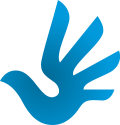This article has multiple issues. Please help improve it or discuss these issues on the talk page . (Learn how and when to remove these messages)
|
| Part of a series on |
| Rights |
|---|
 |
| Theoretical distinctions |
| Human rights |
| Rights by beneficiary |
| Other groups of rights |
|
| Part of a series on |
| Feminism |
|---|
 |
Mother's rights are the legal obligations for expecting mothers, existing mothers, and adoptive mothers. Issues that involve mothers' rights include labor rights, breast feeding, and family rights.